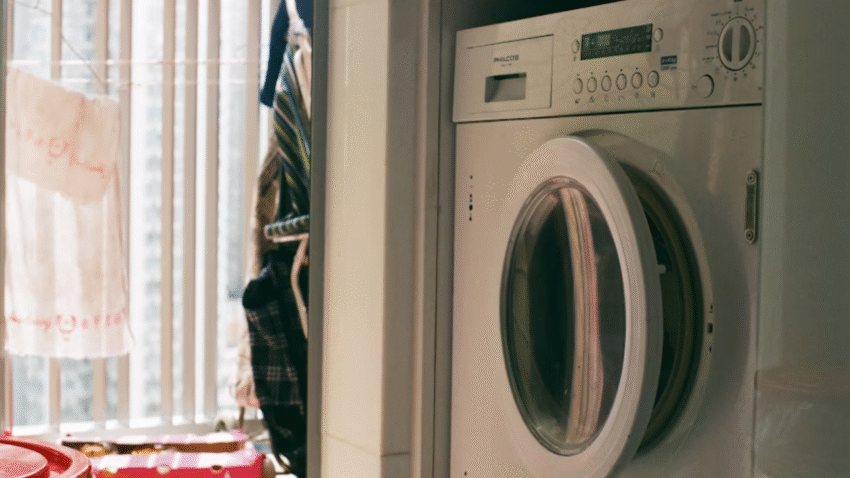Introduction
Wallpaper isn’t just for living rooms and bedrooms—it’s a budget-friendly and transformative way to give your laundry room a fresh, stylish look. Whether you want a bold pattern, a soft pastel, or a modern textured finish, adding wallpaper can instantly upgrade the space you use for daily chores. Learning how to wallpaper a laundry room for a stylish touch will help you create a room that feels more welcoming, organized, and personalized.
Why Wallpaper is Perfect for Laundry Rooms
A laundry room may not be the first space you think of decorating, but it’s one you use regularly. The right wallpaper can:
- Add character – Bring life to plain walls with patterns and colors.
- Reflect personal style – Choose designs that match your taste.
- Enhance small spaces – Patterns can make a compact laundry room look larger.
- Create a cohesive design – Tie in colors with storage bins, rugs, or appliances.
- Boost home appeal – Even small upgrades make a home more attractive to buyers.
Step-by-Step Guide to Wallpapering Your Laundry Room
1. Choose the Right Wallpaper Type
In laundry rooms, moisture and temperature changes can affect materials. Look for:
- Vinyl-coated wallpaper – Moisture-resistant and easy to clean.
- Peel-and-stick wallpaper – Ideal for renters or temporary makeovers.
- Washable wallpaper – Can be wiped down with a damp cloth.
Pro tip: Avoid thin, delicate paper in laundry rooms—it may peel or bubble in humid conditions.
2. Select the Perfect Design
Think about how your laundry room will feel:
- Light colors and soft patterns – Make small rooms feel airy.
- Bold prints – Add drama and personality to plain spaces.
- Vertical stripes – Create the illusion of higher ceilings.
- Nature-inspired designs – Add a calm, fresh atmosphere.
Budget tip: You don’t need to wallpaper the whole room—an accent wall behind the machines or folding station can have a big impact.
3. Gather Your Tools and Materials
You’ll need:
- Wallpaper of your choice
- Wallpaper adhesive (for traditional wallpaper)
- Utility knife or sharp scissors
- Measuring tape
- Pencil
- Level or plumb line
- Wallpaper smoother or squeegee
- Step ladder
- Drop cloth or old sheet to protect the floor
4. Prep the Walls
Proper preparation ensures a smooth finish:
- Remove any shelves, hooks, or wall décor.
- Fill holes or cracks with spackling paste and sand smooth.
- Clean walls with mild soap and water, then let dry.
- For glossy walls, lightly sand to help wallpaper stick.
- Apply primer if recommended by the wallpaper manufacturer.
5. Measure and Cut Wallpaper
- Measure the height of your wall from baseboard to ceiling.
- Add 2–3 inches extra at both top and bottom to allow for trimming.
- Cut your first panel using these measurements.
- If your wallpaper has a repeating pattern, line it up before cutting the next panel.
6. Mark Your Starting Point
- Use a level or plumb line to draw a vertical line on the wall where your first panel will go.
- Starting from the center of the wall rather than a corner can make patterns look balanced.
7. Apply the First Panel
For peel-and-stick wallpaper:
- Peel back a few inches of the backing.
- Align the top of the panel with your starting line.
- Press it to the wall, smoothing as you go to prevent bubbles.
For traditional wallpaper:
- Apply paste to the wall or the back of the paper, depending on the type.
- Align the top edge and smooth down, removing air pockets with the smoother tool.
8. Trim Excess Paper
- Use a sharp utility knife to trim along the ceiling and baseboard.
- Change blades often for clean cuts.
9. Continue Panel by Panel
- Match patterns carefully between panels.
- Overlap slightly if recommended by the manufacturer, or butt edges together for seamless lines.
- Smooth each panel as you go to remove air bubbles.
10. Finishing Touches
- Wipe off excess adhesive with a damp sponge (for pasted wallpaper).
- Reinstall shelves, hooks, and décor.
- Add complementary storage containers, a small rug, or framed prints to complete the look.
Common Mistakes to Avoid
- Skipping Wall Prep
Dirt, dust, or uneven walls can cause bubbles and peeling. - Not Aligning Patterns
Even a slight mismatch can stand out—double-check alignment before smoothing down. - Using the Wrong Wallpaper Type
Thin or non-washable wallpaper won’t last in a laundry room. - Not Accounting for Pattern Repeat
Large patterns may require more wallpaper than a plain design. - Applying Too Quickly
Rushing increases the chance of air bubbles and uneven seams.
Extra Laundry Room Styling Tips
- Accent Just One Wall – Save money and create a focal point.
- Coordinate Colors – Match wallpaper tones to baskets, jars, or rugs.
- Add Lighting – A brighter space shows off your wallpaper and makes laundry easier.
- Use Floating Shelves – They allow your wallpaper to shine while providing storage.
You might also enjoy our guide on How to Upgrade a Laundry Room with Budget DIY Hacks, which pairs perfectly with this wallpaper project.
Conclusion
Wallpapering your laundry room is a simple yet effective way to give it personality and style. By choosing moisture-resistant wallpaper, preparing the walls properly, and applying it with care, you can create a space that’s both functional and beautiful.
📌 Extra Tip: Keep a small roll or leftover wallpaper stored in a labeled tube—perfect for quick touch-ups if a section gets damaged over time. Bookmark this guide before starting so you have the steps handy on project day.
